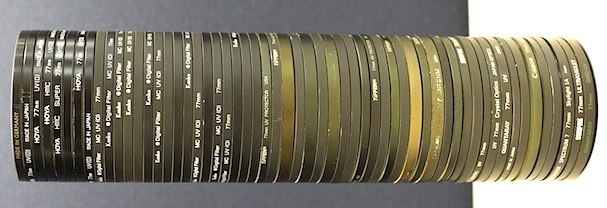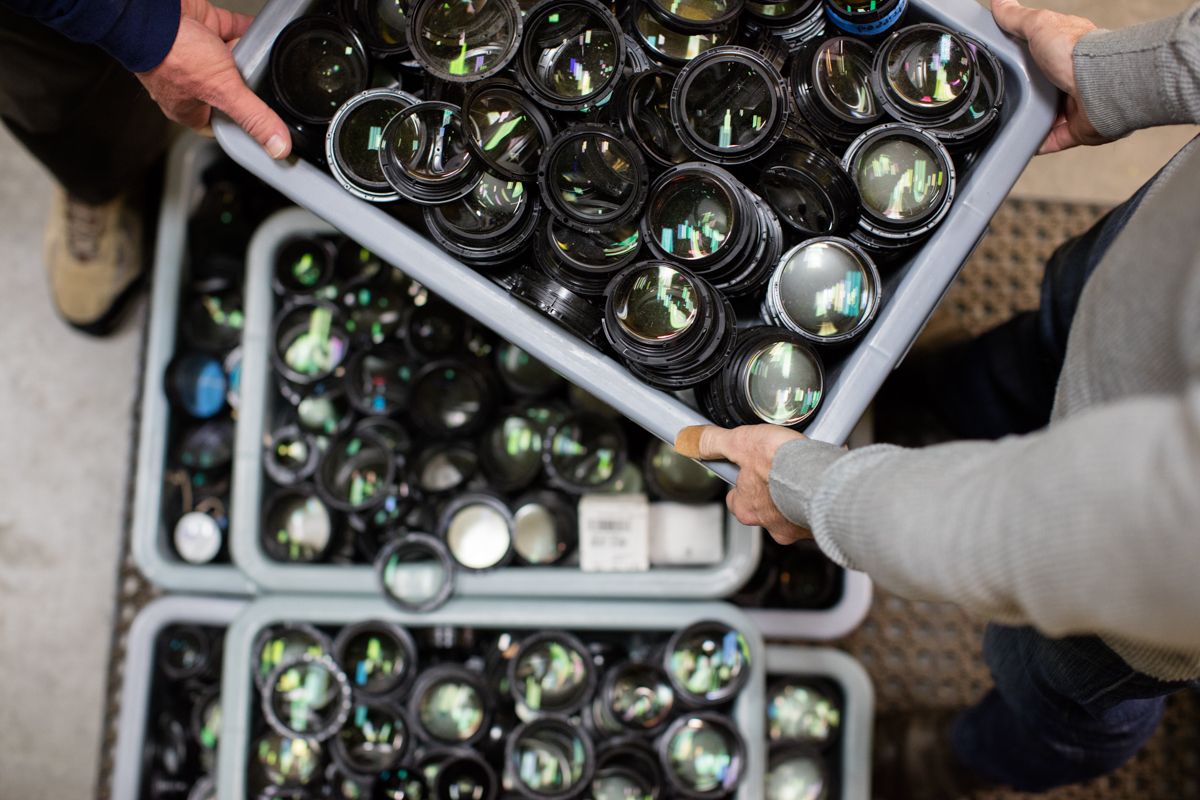Who wants german made when Austria and Canada are the top dogs?
I’ll admit to owning a lot more Canadian stuff than I ever really intended to.

Follow along with the video below to see how to install our site as a web app on your home screen.
Note: This feature may not be available in some browsers.
Who wants german made when Austria and Canada are the top dogs?
I agree and I took a similar path to the the same conclusion. Perhaps in a very dusty/sandy environment I would use one, but the place where you really notice crap on the lens is the eyepiece lens. A tiny drop of water on there and you'll be going, "WTF is that black thing, am I getting floaters in my eye?? And why aren't the floaters floating???"@Convex I like your arguments for using filters, very cogent and detailed. Here is my contrarian view on the subject.
For cameras: I used to religiously buy UV filters for all my lenses and leave them on. Over the decades, I noticed that sometimes led to artifacts in the pictures and some softening of the image under certain conditions. About 10-15 years ago, I removed all these filters and never looked back. I do use a sunshade all the time, and I am totally cognizant of possible issues with them under certain conditions and deal with that appropriately.
For riflescopes: I played with various shades of yellow filters on riflescopes to see if I could enhance mirage conditions, reduce haze, and whatnot. I have 3 different yellows in 62mm in my rifle bag if ever I want to try again. I am not in favor of adding a filter to a riflescope for 2 reasons.
1- A photo filter is not built to withstand the G-forces of rifle. These filters are made for camera lenses which (usually) do not get banged around anywhere near what is experienced by a riflescope. If the filter breaks, it's liable to scratch the lens underneath, or worse if you actually have a filter on the eyepiece. To protect the objective lens, I always have a sunshade installed. It keeps fingers away from the lens and anything this is able to get to the lens with the sunshade on will not be stopped by a filter.
2- I paid a lot of money for my riflescopes and I want to have the best IQ I can get from them; adding one or two more lenses is not conducive to increased IQ; in fact, I think it's counterproductive.
This is all very subjective, and it's always interesting to see the arguments for and against the use of UV filters on photography discussion boards. It appears most pros eschew their use in favor of the best IQ from their lenses. But I'm sure other pros or advanced amateurs can make a good case for their use. As I said, subjective. But one thing that's never mentioned in these discussions is the effect of rifle recoil, which I think makes a huge difference.
tl;dr: I don't use filters on riflescopes, and I recommend against it for safety reasons.



Where did that come from? Seems to lead itself to high levels of variation from sample to sample.Hand made craftsmanship. The internal parts from one 4.5-28 x 52 scope to the one next to it, are not transferable, as each scope is made by one engineer start to finish, with pieces sized, fitted and put together by that one person.
Yes, that does not seem right, while each scope is hand built March has never indicating that each and every part are custom sized???Where did that come from? Seems to lead itself to high levels of variation from sample to sample.
Mate I have no complaints so far does everything I ask, am happy with the reticle. Have used it in a hand full of PRS comps. Really like it. I’m in Australia and was lucky to pick last one up in stock with there worldwide sales before the few month wait. Cheers.Congrats on your new scope @Heffo. And an awesome price, where did you buy it? And what are your thoughts on it after a few months?
Jim
Not custom sized, I’m sure it’s a bees dicks difference. Info came from one of the three Wordwide March distributors.Yes, that does not seem right, while each scope is hand built March has never indicating that each and every part are custom sized???
At 4.5x = 11.5mm exit pupil
At 28x = 1.85mm exit pupil
Objective size divided by the magnification of the scope.
At 4.5x = 11.5mm exit pupil
At 28x = 1.85mm exit pupil
Objective size divided by the magnification of the scope.
Even though it has a limited exit pupil it is still impressive and better than other 42mm objective scopes at 10x due to improved detail and contrast performance, but will it compete with the top 50mm scopes in regard to overall light gathering ability... not as good in my testing.Thank you for the thorough review. The exit pupil actually stopped me from buying it today. I will use this for both long range shooting and hunting, and in Norway the daylight in fall / winter is limiting factor for most hunting scopes. I could never justify getting this scope to only shoot it during the bright hours.
Not for this particular model; however, it is possible for March to build a future model where they do not limit exit pupil. Understand that March's primary objective with this scope was for competition, they wanted to make a scope that offered a wide mag range but was also as forgiving as possible given the design parameters. By limiting the exit pupil they were able to accomplish some of these feats with a short body design (hard to do). After its release the crossover community took notice because of the under 30oz weight of the scope, and unless you had this scope side by side with a ZCO 4-20x50 you likely would not know/tell the difference in light gathering performance.Do you think march will open up the exit pupil for future models?
You are a mind reader, I have literally asked March to build this very scope (but I am just a small voice in a sea of voices so it would be good for others to send March a note - they do listen to customer feedback better than many mfr's), well to be honest, it was a 3.2-20x56 (given their 6.2x erector) and not to limit exit pupil performance below 7mm in lower mag range. And I have also asked for the reticle to be usable at bottom mag... their FML-TR1H reticle they used in the 3-24x52 is a very good performer, I just wish their illumination was brighter similar to Vortex, ZCO, NF NX8 et al, would also be nice to see their dual focal plane reticle make it into a future crossover scope.Ultimately i would want something around 3-20x56 with a very bright center dot so that the low end magnification reticle would still be usable for hunting. This scope seemed like a good comprimise that I could use for LR shooting and LR hunting, but also be able to take a close range shot if i stumbeled upon a deer.
To be fair, I think the March 4.5-28x52 excels with a clipon, I know a lot of guys don't want anything above 2.5x for clipon use but as thermal improves and with the huge FOV the March offers I think it's better than a lot of scopes due to weight and length.Having bought 50mm thermal I have noticed I no longer need that much low light performance. But then again, to identify targets 56mm is of course the best until sunset because the visual spectrum carries more information.
I don't think you can differentiate objective into minutes unless you have the exact same optical formula (outside of the objective of course) and how much of that is quantitative vs. qualitative? For example, put a Tangent Theta 3-15x50 side by side with a Steiner T6Xi 3-18x56 and stick that trophy taxidermy dear head with antlers in the thick bush after sunset and from 300 yards away start looking through both scopes and identify which one allows you to see the details of the dear and tines through the brush the longest. Hmmm, maybe I just thought of a new category for low light testing that matters a lot more than my contrast and resolution chart...I am sure that 50mm scope would surely be nowdays better for me because 56mm vs 50mm will not buy more than 10-15 minutes, correct?
The numbers do not tell the whole story, sure if we're side by side with a TT or ZCO 50mm scope you will probably notice a difference, but the March has such good contrast even with low light it helps to identify even though it may not be as bright.I really got the idea that the March would be supbar in the 50mm high end class but now it apparently is ok?
That rubber button is inset somewhat so you would have to have something like a branch directly poke into it to cause any sort of damage, and even if the rubber is damaged I think the control would still work.One of the most worrying specs about it is the rubbery illumination button, I fear it might wear when carried against gear.
A lot of scopes do not have numbers on the parallax. Different atmospherics can affect parallax so your numbers will not always be correct, do not rely on the numbers but dial until your image is parallax free.For some reason it also does not have numbered parallax?
I usually mark mine with a white marker for that very purpose when I'm off the scope, when I'm on the scope it's just easier to dial for focus and then fine tune to diopter if I have the time.@Glassaholic Thanks for answering these puzzling questions. I gotta clarify that I like the parallax numbers because it lets me do a sanity check easily and when in hurry, get it close enough. They work great as a reference point.
I hear you, better safe than sorry, I'd like to see March use a solid dial like most as I am not a fan of any of the push button illumination configurations like NF.And yes, I would probably get the dial poked by a branch or something other.
I have a NF compact scope and the only thing I do not like about it is the push button illumination also.I usually mark mine with a white marker for that very purpose when I'm off the scope, when I'm on the scope it's just easier to dial for focus and then fine tune to diopter if I have the time.
I hear you, better safe than sorry, I'd like to see March use a solid dial like most as I am not a fan of any of the push button illumination configurations like NF.
Kidd makes a outstanding rifle.I have a March 4.5-28x on my Kidd 10/22 and the rubber over the on/off button feels pretty beefy. It's not like a balloon that is waiting to be popped. I seriously doubt a branch poking it would have any significant effect on it.
